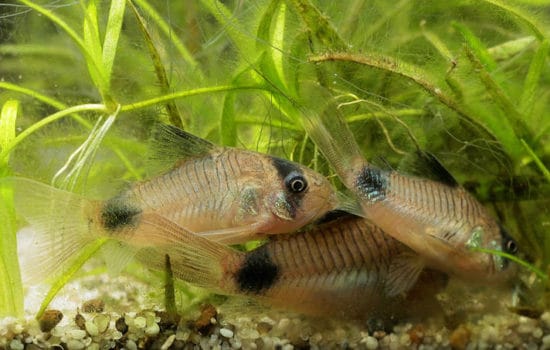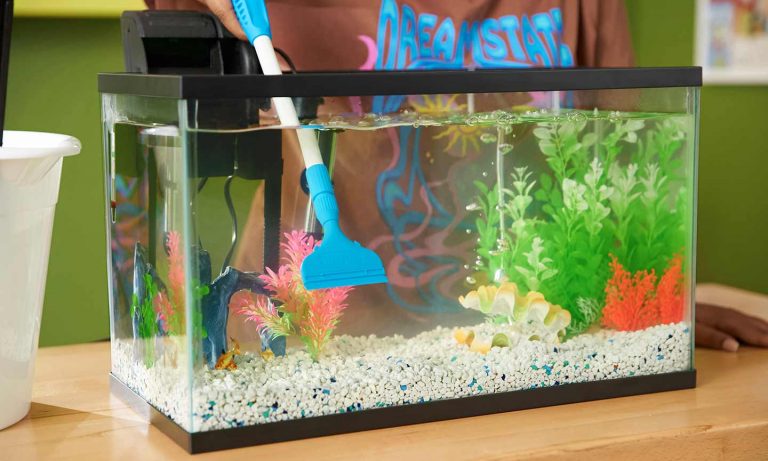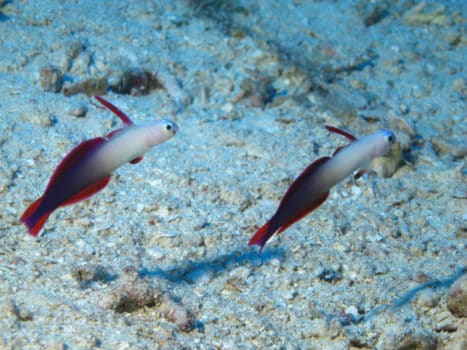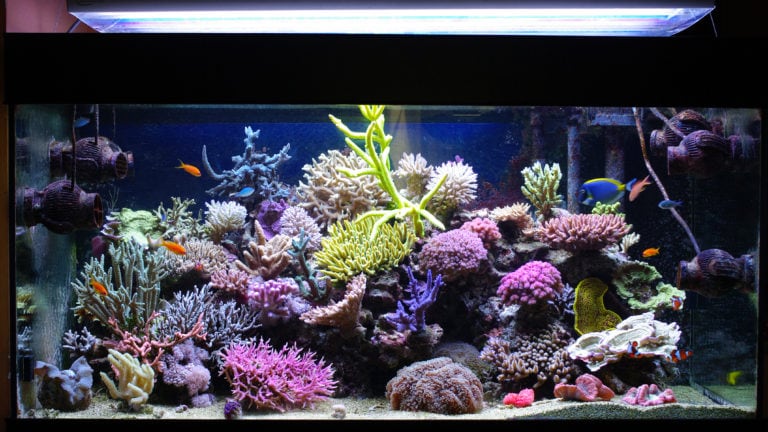Fish that stay primarily on the bottom of your tank are known as bottom dwellers, even though they often move about through all strata of the tank. Fish that spend the great majority of their time on the substrate often do a service of sorts by picking off any food that is missed by the fish that inhabit the upper echelons of your tank. Now that is not to say that you can get away with not target feeding bottom dwellers because you can’t, as these fish often have certain food requirements that aren’t remedied by the occasional morsel that makes its way to the gravel. In short, you still have to feed them. Usually a sinking pellet or tablet will suffice. Herbivorous fish such as the otocinclus and the plecostomus also benefit from leafy greens. It all depends on the species of the fish.
Here are 5 great bottom-dwelling fish for the freshwater fish aquarium. They all have certain requirements but if these requirements are met, you can have some nice fish to accent the fish that reside at mid level as well as any that stay at the top level of the tank. So, in no particular order, I present these fish.
1. Kuhli Loach
The kuhli loach (Acanthophthalmus kuhlii) has got to be my favorite freshwater aquarium fish. Elusive, secretive, and beautifully banded in orange and black, the kuhli loach looks like a Halloween swizzle stick, complete with barbels that help it to locate food on the bottom of the tank. This fish is primarily nocturnal, so it is advised that you feed them at night. With the lights off. Also, make sure that they have a cave to hide in, or gravel in which they can burrow under. I’ve had may kuhli loaches over the years and they can love a long time. They are a peaceful fish that will do well with other peaceful fish.

Via Shutterstock/Pavaphon Supanantananont
Kuhli loaches are nocturnal fish that like to hide during the daytime, usually buried under the gravel. Here is more information on the kuhli loach.
2. Corydoras Catfish
There are many species of Corydoras catfish (Corydoras sp.) available in a variety of different colorations and patterns. These fish are very peaceful and do well in groups of three or more. They have barbels on their lips that help them to locate food that has made it to the gravel of a fish tank and because of this, it is highly recommended that sand be the substrate of choice if you are housing these fish. Big pebbles can cause irreparable damage to their whiskers, meaning, they can lose all their whiskers because of incorrect substrate. The cory cat will eat a variety of fish food, as long as it makes it to the bottom. Supplement any floating foods for your tank’s other inhabitants with a sinking food that the cory cats can quickly find on the sand. Your cory cats will be the more happy for it. They are a peaceful fish that will do well with other peaceful fish.

Here is more information on Cory catfish.
3. Plecostomus
Plecostomus are usually the first thing folks recommend to get rid of the algae in a fish tank. While they do a great job of keeping your tank’s glass free of algae, they do need to be fed on a regular basis. Algae tablets are the first recommendation as these drop to the substrate where these fish are often located, when they aren’t sucking on some glass of course. Be advised though that the plecostomus, depending on the species can get very large and require large tanks. A 55 gallon would be a great minimum size tank for a pleco. Other pleco species, such as the rubber lip grows to around 3-5 inches in length. The common plecostomus can reach 12 inches in length. Plecostomus are peaceful fish that can live in most aquarium environments provided they have ample room to grow, depending of course on the species.
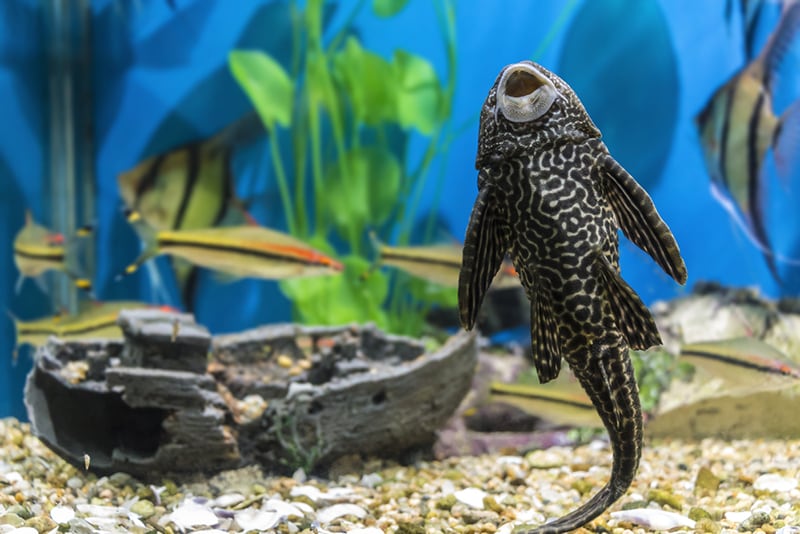
Via Shutterstock/SV Production
Plecos really need to be researched prior to purchase. Unfortunately, many of them are sold to inexperienced hobbyists who eagerly anticipate that their pleco will dutifully rid their aquarium of unwanted algae. Here is more information on Plecostomus.
4. Otocinclus
The otocinclus, or oto for short is a bottom dwelling species that does best in groups of six or more. Otos are relatively small fish that feed on algae. They are a delicate sucker mouth catfish species that requires absolutely pristine and well agitated water to mimic their habitat in the wild. This fish is also primarily wild caught and as such are more challenging to keep than captive bred fish, though they can be kept successfully. The otocinclus requires a densely planted tank with plenty of live plants, rocks and a fine substrate. This herbivorous fish requires a supplement of raw leafy vegetables such as romaine lettuce, zucchini and peas to add to the algae tablets that most people who keep these fish feed them. Don’t expect them to keep your tank free of algae, even though they it algae. If you can provide excellent water quality and supplement their food with vegetable matter, you can be successful with this fish.
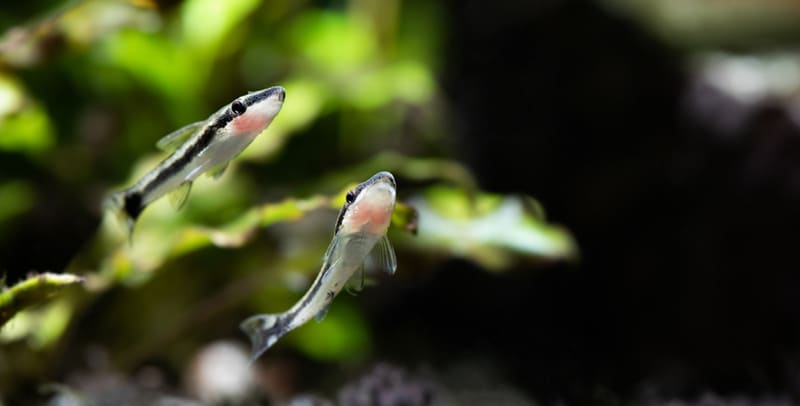
Via Shutterstock/Besjunior
Here is more information on Otocinclus.
5. Twig Catfish
The twig catfish (Farlowella sp.) grow to about six inches in length and require excellent water quality to survive. They eat algae primarily but also have been known to feed on bloodworms and frozen foods. They are called twig catfish because in their wild environment, they look like twigs and spend a great deal of time on driftwood that may have settled on the bottom of a stream. They camouflage very well and can grow to about 7 inches in length. The twig catfish needs a minimum 20 gallon tank and do well with other peaceful community tank fish. Feed them spiraling tablets as well as blanched zucchini and romaine lettuce as a supplement.
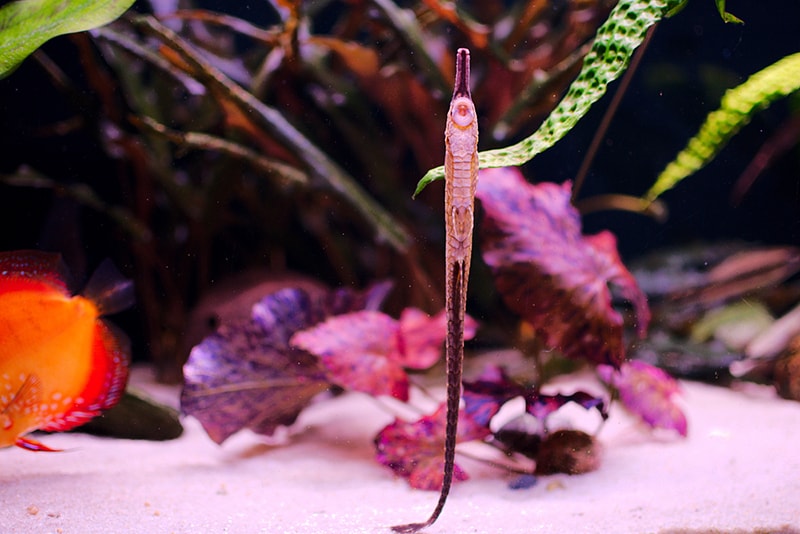
Via Shutterstock/Dariusz Adam Januszek
The twig catfish can grow up to six inches in length and requires pristine water quality. Read more about the twig catfish.
Posted by: Chewy Editorial
Featured Image: Via Dornenwolf/Flickr
Share:
